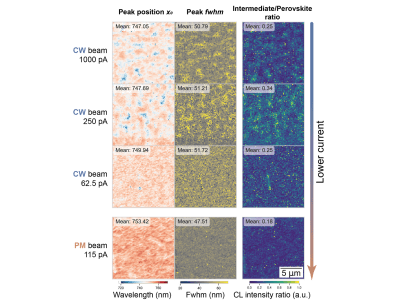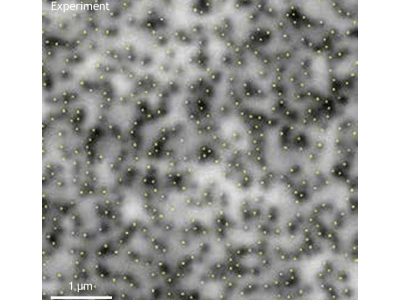Pinhole Detection in Photovoltaic and Thin Film Battery Materials

For photovoltaics (PV) and thin film batteries (TFB) to cost compete against fossil fuels and traditional batteries high manufacturing yield is critical. Pinholes in the CdS layer of CdTe/CdS and CdS/ CIGS PV devices and the LiPON layer of TFBs result in yield loss and lower performance. SEM plan view analysis does not have the depth resolution to determine if holes penetrate completely through a layer.

Benefits of Attolight’s CL technology are:
- Reduces development time by enabling pinhole detection for unit processes; allows comparison of how process variables and deposition methods effect pinhole formation.
- Evaluates defect density and composition gradients during pinhole detection.
- Rapid Automated Mapping: 25 μm×25 μm area mapped in 65 sec.
CL detects pinholes by detecting light from the underlying layer as depicted below:

The SEM image and CL map below show an actual application of this technique to pinholes in CdS deposited by Chemical Bath Deposition on SnO2. The emission lines are:
- CdS (light areas in SEM): green (band gap) and red (mid-gap defect states).
- Pinholes (black areas in SEM): blue (mid-gap defect states) from SnO2 at bottom of holes.
Circles correspond to single CL points. Circle diameter = electron interaction volume (100 nm@5keV).




.webp)


